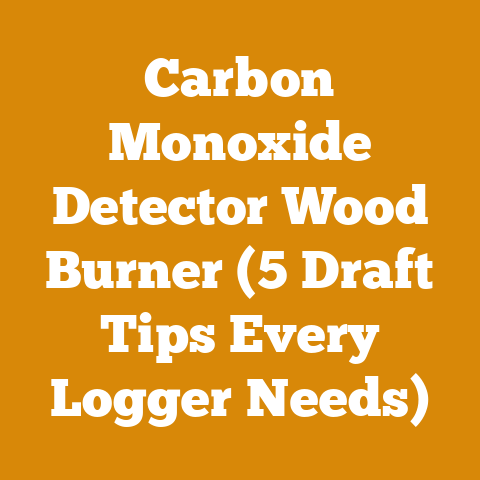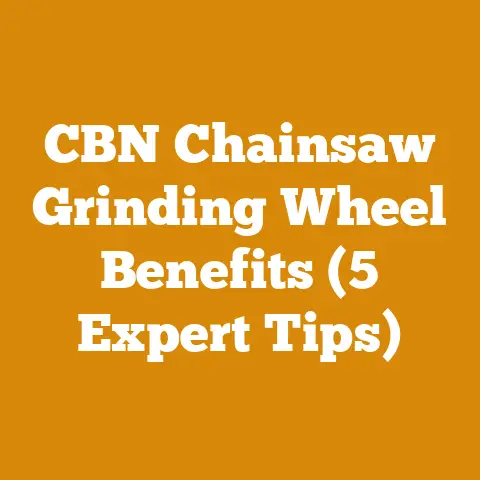Husqvarna Bar Nut Tightening (5 Expert Torque Tips)
“Alright, alright, alright!” Remember Matthew McConaughey’s smooth delivery? That’s the vibe I’m aiming for as we dive into the surprisingly crucial topic of chainsaw bar nut tightening. It might seem like a small detail, but trust me, properly tightening those bar nuts on your Husqvarna is the difference between a smooth, efficient cutting session and a potential disaster. And just like McConaughey’s career choices, precision is key. This isn’t just about tightening a nut; it’s about safety, performance, and the longevity of your prized Husqvarna.
In this article, I’m going to share my expert torque tips for tightening Husqvarna bar nuts. I’ll break down the process, explore the why behind each step, and even get into the nitty-gritty of torque specs and troubleshooting. I’ll also touch on the financial side of things, because let’s face it, a well-maintained chainsaw saves you money in the long run. We’ll look at the costs associated with neglecting proper tightening, including potential repairs, premature wear, and even lost productivity.
Husqvarna Bar Nut Tightening: 5 Expert Torque Tips for Peak Performance and Safety
Think of your chainsaw as a finely tuned instrument. The bar nuts are like the tuning pegs – get them wrong, and the whole thing sounds off. A loose bar can lead to chain derailment, damage to the bar and chain, and even serious injury. Too tight, and you risk stripping threads, warping the bar, and overstressing the saw’s components. It’s a delicate balance, but one that’s easily mastered with the right knowledge.
1. Understanding the Importance of Proper Torque
Before we get our hands dirty, let’s understand why proper torque is so vital. Torque, simply put, is a twisting force. It’s measured in Newton-meters (Nm) or foot-pounds (ft-lbs). Applying the correct torque to the bar nuts ensures the bar is held securely against the engine housing, providing proper chain tension and preventing slippage.
Why Proper Torque Matters:
- Safety: A properly tightened bar reduces the risk of chain derailment, which can cause serious injury.
- Performance: Correct tension allows the chain to cut efficiently and prevents premature wear on the bar and chain.
- Longevity: Consistent, proper torque prevents damage to the bar, chain, and saw housing, extending the life of your equipment.
The Cost of Neglect:
Now, let’s talk about the financial impact. Imagine a chain derailing and damaging your bar. A new Husqvarna bar can easily cost anywhere from $50 to $200, depending on the size and type. A new chain will set you back another $30 to $100. And that’s just the parts. If you have to take it to a shop for repairs, you’re looking at labor costs of $75 to $150 per hour.
I remember one time, when I was clearing some storm damage after a particularly nasty ice storm, I got complacent and didn’t check the bar nut tightness as often as I should have. Sure enough, the chain derailed, and while I wasn’t hurt, the bar was bent beyond repair. That little lapse in attention cost me about $80 for a new bar and a half-day of lost work. It was a hard lesson learned, but one that reinforced the importance of meticulous maintenance.
2. Identifying Your Husqvarna Model and Finding Torque Specifications
Not all Husqvarna chainsaws are created equal. Each model has its own specific torque requirements for the bar nuts. Overtightening can strip the threads on the bolts or damage the bar, while undertightening can lead to chain slippage and potential accidents.
Finding the Right Specs:
- Owner’s Manual: This is your first and best resource. The owner’s manual will list the recommended torque specifications for your specific model.
- Husqvarna Website: If you’ve lost your manual, you can often find a digital copy on the Husqvarna website.
- Online Forums and Communities: Many online forums dedicated to chainsaws have threads where users share information and tips about specific models. However, always verify information from these sources with the official manual.
- Local Husqvarna Dealer: Your local dealer can provide you with the correct torque specifications and answer any questions you may have.
Example Torque Specifications (Illustrative):
- Husqvarna 455 Rancher: 18-22 Nm (13-16 ft-lbs)
- Husqvarna 372XP: 20-25 Nm (15-18 ft-lbs)
- Husqvarna 572XP: 22-28 Nm (16-21 ft-lbs)
Note: These are illustrative examples only. Always consult your owner’s manual for the correct torque specifications for your specific Husqvarna model.
The Cost of Incorrect Torque:
Using the wrong torque can lead to a cascade of problems. Stripped threads on the bar studs can necessitate replacing the entire engine case, a repair that can easily exceed $300. Warped or damaged bars can cost upwards of $100 to replace. The lesson here? Take the time to find the right specs. It’s a small investment of time that can save you a lot of money and headaches in the long run.
3. Choosing the Right Tools for the Job
Having the right tools is essential for achieving accurate torque and preventing damage to your chainsaw. While you can get away with using a standard wrench in a pinch, a torque wrench is the best tool for the job.
Essential Tools:
- Torque Wrench: A torque wrench allows you to apply a specific amount of torque to the bar nuts, ensuring they are tightened to the manufacturer’s specifications. I recommend using a click-type torque wrench, as it provides an audible click when the desired torque is reached.
- Socket: You’ll need a socket that fits the bar nuts on your Husqvarna chainsaw. The size will vary depending on the model, but it’s typically around 13mm or 19mm.
- Wrench: A standard wrench can be used for initial tightening and loosening of the bar nuts, but should not be used for final tightening to the specified torque.
- Screwdriver or Bar Adjustment Tool: This is used to adjust the chain tension after tightening the bar nuts.
- Gloves: Protect your hands from grease, oil, and sharp edges.
Tool Costs:
- Torque Wrench: A decent quality torque wrench can range from $50 to $150. While it may seem like an expensive investment, it’s a worthwhile one if you want to properly maintain your chainsaw and other power tools.
- Socket Set: A basic socket set can be purchased for around $20 to $50.
- Wrench Set: A wrench set will cost you around $30 to $70.
- Screwdriver Set: A good screwdriver set can be found for around $20 to $40.
- Bar Adjustment Tool: These are often included with the chainsaw or can be purchased separately for around $10 to $20.
My Tool Philosophy:
I’ve always believed in investing in quality tools. Cheap tools are more likely to break, strip threads, and generally make your life more difficult. A good torque wrench, for example, will last for years and provide accurate readings every time. I’ve had my trusty torque wrench for over a decade, and it’s paid for itself many times over in saved repairs and peace of mind.
4. The Step-by-Step Tightening Procedure
Now that we have the right tools and know the correct torque specifications, let’s walk through the actual tightening procedure.
Step 1: Loosen the Bar Nuts
If the bar nuts are already tight, use a wrench to loosen them slightly. Don’t remove them completely.
Step 2: Adjust Chain Tension
Use the bar adjustment tool or screwdriver to adjust the chain tension. The chain should be snug against the bar, but you should still be able to pull it around the bar by hand. There should be minimal sag on the underside of the bar.
Step 3: Tighten the Bar Nuts by Hand
Tighten the bar nuts by hand until they are snug. This will hold the bar in place while you adjust the torque.
Step 4: Torque to Specification
Set your torque wrench to the correct torque specification for your Husqvarna model. Place the socket on the bar nut and slowly apply pressure until the torque wrench clicks. Repeat this process for the other bar nut.
Important Considerations:
- Alternating Tightening: Tighten the bar nuts in an alternating pattern, similar to tightening lug nuts on a car wheel. This ensures even pressure distribution. Tighten one nut partially, then the other, and then repeat until both are at the correct torque.
- Check Chain Tension Again: After tightening the bar nuts, check the chain tension again. If it’s too tight or too loose, loosen the bar nuts slightly and readjust the tension.
- Regular Checks: Check the bar nut tightness regularly, especially during extended use. Vibration can cause the nuts to loosen over time. I usually check mine after every tank of gas.
The Cost of Improper Tightening:
Failing to follow these steps can lead to a variety of problems. Overtightening can strip the threads on the bar studs, requiring costly repairs. Undertightening can lead to chain slippage, bar damage, and potential injury. Taking the time to follow these steps carefully will ensure your chainsaw operates safely and efficiently.
5. Troubleshooting Common Issues and Maintenance Tips
Even with the best techniques, you might encounter some issues during the tightening process. Here are some common problems and how to address them.
Common Issues:
- Stripped Threads: If you overtighten the bar nuts, you may strip the threads on the bar studs. This is a serious problem that can require replacing the entire engine case.
- Solution: If the threads are only slightly damaged, you may be able to repair them with a thread chaser. However, if the damage is severe, you’ll need to replace the bar studs or the entire engine case.
- Rounded Bar Nuts: Using the wrong size wrench or applying too much force can round the edges of the bar nuts, making them difficult to tighten or loosen.
- Solution: Use a socket with a tighter fit or a specialized nut extractor to remove the rounded nuts. Replace them with new nuts.
- Chain Slippage: If the chain is still slipping after tightening the bar nuts to the correct torque, the bar may be worn or damaged.
- Solution: Inspect the bar for wear or damage. If the bar is worn, replace it. If the bar is damaged, you may be able to repair it by filing down any burrs or imperfections.
- Uneven Bar Wear: If you notice that one side of the bar is wearing more quickly than the other, it could be a sign of uneven tension on the bar nuts.
- Solution: Loosen the bar nuts and inspect the bar for damage. Make sure the bar is properly seated against the engine housing. Tighten the bar nuts to the correct torque, using an alternating tightening pattern.
Maintenance Tips:
- Clean the Bar and Chain Regularly: Dirt and debris can accumulate on the bar and chain, causing friction and wear. Clean the bar and chain regularly with a wire brush and solvent.
- Lubricate the Bar and Chain: Use a high-quality bar and chain oil to lubricate the bar and chain. This will reduce friction and wear, and help to keep the chain cool.
- Sharpen the Chain Regularly: A sharp chain will cut more efficiently and reduce strain on the engine. Sharpen the chain regularly with a file or a chain grinder.
- Inspect the Bar Regularly: Inspect the bar for wear or damage. Replace the bar if it is worn or damaged.
- Store Your Chainsaw Properly: Store your chainsaw in a dry, well-ventilated area. Drain the fuel tank and remove the chain before storing the chainsaw for an extended period of time.
The Cost of Preventative Maintenance:
Regular maintenance is essential for extending the life of your chainsaw and preventing costly repairs. A bottle of bar and chain oil costs around $10 to $20. A chain sharpening file costs around $10 to $15. A chain grinder costs around $50 to $150. While these costs may seem small, they can add up over time. However, they are a small price to pay compared to the cost of replacing a damaged bar or engine.
My Personal Story:
I’ve learned the hard way about the importance of regular maintenance. I once neglected to clean and lubricate my chainsaw properly, and the bar seized up on me while I was cutting firewood. The bar was damaged beyond repair, and I had to spend over $100 to replace it. That experience taught me the value of taking care of my tools. Now, I make sure to clean, lubricate, and sharpen my chainsaw after every use. It takes a little extra time, but it’s worth it in the long run.
Final Thoughts: Torque is King (and Saves You Green!)
Tightening the bar nuts on your Husqvarna chainsaw might seem like a minor task, but it’s crucial for safety, performance, and longevity. By understanding the importance of proper torque, finding the right specifications, using the right tools, following the correct tightening procedure, and troubleshooting common issues, you can keep your chainsaw running smoothly for years to come.
And remember, a little preventative maintenance goes a long way. By taking care of your chainsaw, you’ll save money on repairs, extend the life of your equipment, and enjoy the peace of mind that comes with knowing you’re operating safely.
So, go forth, tighten those bar nuts with confidence, and “just keep cutting, just keep cutting!” Your wallet (and your Husqvarna) will thank you.






